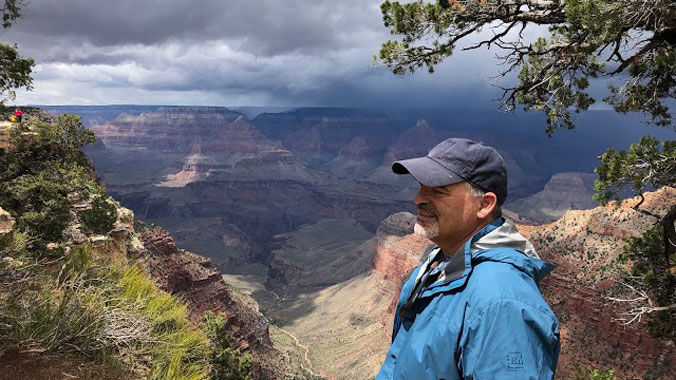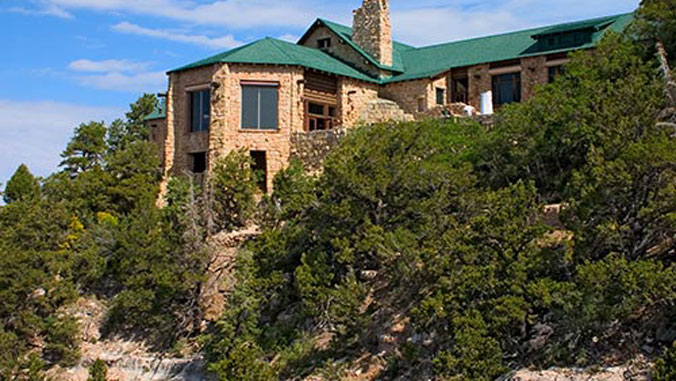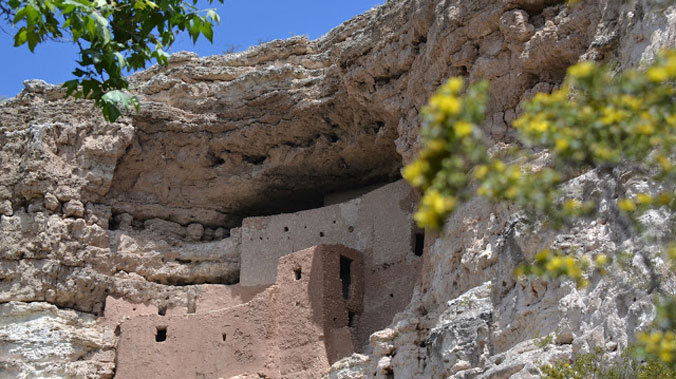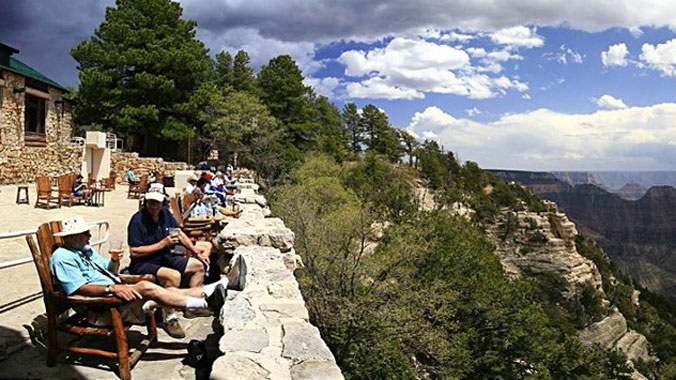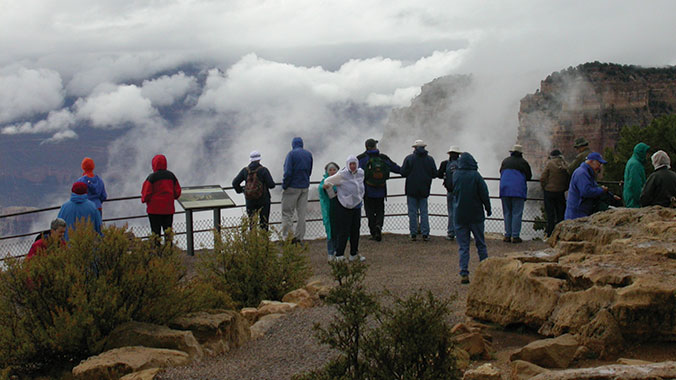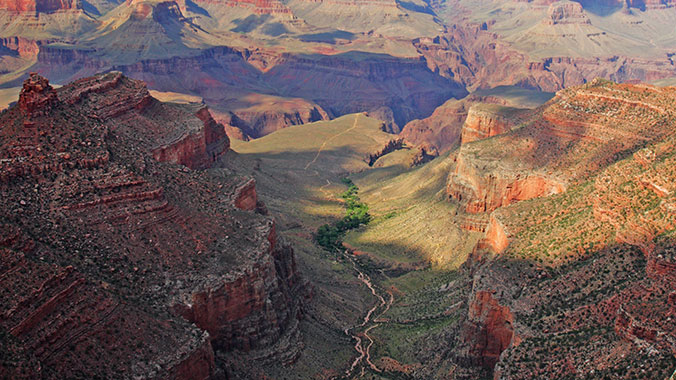
Arizona
Grand Canyon National Park: Exploring the North and South Rims
Program No. 2804RJ
Experience Sedona’s red rocks and get a unique perspective of the Grand Canyon as you explore both the North and South Rims, and fly above the Colorado River for a bird’s-eye view!
Enroll with Confidence
We want your Road Scholar learning adventure to be something to look forward to—not worry about. Learn more
Protecting the Environment
We offset a portion of the emissions created by your travel. Learn more
7 days
6 nights
16 meals
6B 5L 5D
1
Check-in, Registration, Orientation, Welcome Dinner
Flagstaff, AZ
2
Montezuma Castle National Monument, Sedona
Flagstaff, AZ
3
Flagstaff, Grand Canyon South Rim
South Rim, Grand Canyon, Arizona
4
Scenic Grand Canyon Over Flight, Free Time
South Rim, Grand Canyon, Arizona
5
Desert View, Navajo Bridge, Arrive North Rim
North Rim, Grand Canyon
6
North Rim Exploration.
Marble Canyon, AZ
7
Program Concludes
Departures
At a Glance
Carved from millions of years of erosion, the Grand Canyon has countless layers of history just waiting to be discovered. Explore the hidden treasures inside this national park from ancient fossils to the Marble Canyon, all alongside the local experts who know them best. Witness a part of the United States that has been preserved for millennia on excursions to both the North and South Rims, and gain a deeper understanding of the indigenous people who first inhabited this land. On a journey through this epic national park and Sedona’s stunning landscapes, learn the story of the region’s geological beginning while standing in awe of this sea of sandstone.
Activity Level
Keep the Pace
Walking up to two miles daily on varied terrain. On South Rim, quarter-mile walk between lodging and dining. Elevations of 7,000-8,000 feet

Small Group
Love to learn and explore in a small-group setting? These adventures offer small, personal experiences with groups of 13 to 24 participants.
Best of all, you’ll…
- Experience the incredible opportunity to fly over both rims aboard a fixed-wing aircraft, if you choose.
- Discover one-of-a-kind vistas as you explore the jewels of Sedona as well as the Grand Canyon’s North and South Rims.
- Venture into Marble Canyon and the Vermilion Cliffs—two of the Grand Canyon’s lesser-known gems—and walk across the historic Navajo Bridge spanning 600 feet across the Colorado River.
General Notes
Grand Canyon overflight at added cost.
Featured Expert
All trip experts

Amy Calhoun
Amy Calhoun has been writing poetry, short stories and human interest pieces for local publications for nearly 35 years. She is an artist working with furniture and mixed media, pulling from her inspiration -- the great Southwest. Amy enjoys the outdoors as much as anything else she. She has spent time studying archeology and anthropology and enjoys working relationships and friendships with members of many Arizona tribes. She has raised three children and has two young granddaughters.
Please note: This expert may not be available for every date of this program.

Amy Calhoun
View biography
Amy Calhoun has been writing poetry, short stories and human interest pieces for local publications for nearly 35 years. She is an artist working with furniture and mixed media, pulling from her inspiration -- the great Southwest. Amy enjoys the outdoors as much as anything else she. She has spent time studying archeology and anthropology and enjoys working relationships and friendships with members of many Arizona tribes. She has raised three children and has two young granddaughters.
Suggested Reading List
(9 books)
Visit the Road Scholar Bookshop
You can find many of the books we recommend at the Road Scholar store on bookshop.org, a website that supports local bookstores.
Grand Canyon National Park: Exploring the North and South Rims
Program Number: 2804
Breaking Into the Current: Boatwomen of the Grand Canyon
This book profiles eleven of the first full-season Grand Canyon boatwomen, weaving together their various experiences in their own words. Breaking Into the Current is a story of romance between women and a place. Each woman tells a part of every Canyon boatwoman's story: when Marilyn Sayre talks about leaving the Canyon, when Ellen Tibbets speaks of crew camaraderie, or when Martha Clark recalls the thrill of white water, each tells how all were involved in the same romance. All the boatwomen have stories to tell of how they first came to the Canyon and why they stayed. As river guides in love with the Canyon and their work, these women have followed their hearts. 178pp
Living at the Edge: Explorers, Exploiters, and Settlers of the Grand Canyon Region
A comprehensive look at the pioneer history of the Grand Canyon Region, from its earliest residents to the creation of the national park at the end of the pioneer era (circa 1920). Included are close to two hundred historic photographs, many never published before, and 12 custom maps of the region. 184pp
The Emerald Mile: The Epic Story of the Fastest Ride in History Through the Heart of the Grand Canyon
In the spring of 1983, massive flooding along the length of the Colorado River confronted a team of engineers at the Glen Canyon Dam with an unprecedented emergency that may have resulted in the most catastrophic dam failure in history. In the midst of this crisis, the decision to launch a small wooden dory named “The Emerald Mile” at the head of the Grand Canyon, just fifteen miles downstream from the Glen Canyon Dam, seemed not just odd, but downright suicidal.
The Emerald Mile, at one time slated to be destroyed, was rescued and brought back to life by Kenton Grua, the man at the oars, who intended to use this flood as a kind of hydraulic sling-shot. The goal was to nail the all-time record for the fastest boat ever propelled—by oar, by motor, or by the grace of God himself—down the entire length of the Colorado River from Lee’s Ferry to Lake Mead. Did he survive? Just barely. Now, this remarkable, epic feat unfolds here, in The Emerald Mile.
Introduction to Grand Canyon Geology
This overview of Grand Canyon geology is perfect for the first-time visitor or the seasoned Grand Canyon traveler. Chapters cover the basic priciples of geology, the history of geological exploration at Grand Canyon, the canyon's structural features, and the Colorado River. Includes over 70 photos and illustrations, an index, and glossary. 63pp
Down the Great Unknown: John Wesley Powell's 1869 Journey of Discovery and Tragedy Through the Grand Canyon
On May 24, 1869 a one-armed Civil War veteran, John Wesley Powell and a ragtag band of nine mountain men embarked on the last great quest in the American West. The Grand Canyon, not explored before, was as mysterious as Atlantis—and as perilous. The ten men set out from Green River Station, Wyoming Territory down the Colorado in four wooden rowboats. Ninety-nine days later, six half-starved wretches came ashore near Callville, Arizona.
Lewis and Clark opened the West in 1803, six decades later Powell and his scruffy band aimed to resolve the West’s last mystery. A brilliant narrative, a thrilling journey, a cast of memorable heroes—all these mark Down the Great Unknown, the true story of the last epic adventure on American soil.
Carving Grand Canyon: Evidence, Theories, and Mystery
Ranney explains how rivers in general can physically carve canyons, looks chronologically at the numerous theories that have been presented by successive generations of geologists regarding the Grand Canyon's formation, and describes a plausible sequence of geologic events that could create such a landscape. Numerous color photographs, detailed illustrations, and maps are provided. Annotation ©2005 Book News, Inc., Portland, OR 160pp; 2nd edition 2012.
I Am the Grand Canyon: The Story of the Havasupai People
I Am the Grand Canyon is the story of the Havasupai people. From their origins among the first group of Indians to arrive in North America some 20,000 years ago to their epic struggle to regain traditional lands taken from them in the nineteenth century, the Havasupai have a long and colorful history. The story of this tiny tribe once confined to a toosmall reservation depicts a people with deep cultural ties to the land, both on their former reservation below the rim of the Grand Canyon and on the surrounding plateaus.
In the spring of 1971, the federal government proposed incorporating still more Havasupai land into Grand Canyon National Park. At hearings that spring, Havasupai Tribal Chairman Lee Marshall rose to speak. "I heard all you people talking about the Grand Canyon," he said. "Well, you're looking at it. I am the Grand Canyon!" Marshall made it clear that Havasu Canyon and the surrounding plateau were critical to the survival of his people; his speech laid the foundation for the return of thousands of acres of Havasupai land in 1975.
I Am the Grand Canyon is the story of a heroic people who refused to back down when facing overwhelming odds. They won, and today the Havasupai way of life quietly continues in the Grand Canyon and on the surrounding plateaus.
The Man Who Walked Through Time: The Story of the First Trip Afoot Through the Grand Canyon
The remarkable classic of nature writing by the first man ever to have walked the entire length of the Grand Canyon. 256pp
An Introduction to Grand Canyon Prehistory
People have inhabited Grand Canyon for the past twelve thousand years. Evidence of their lives exists throughout the canyon; but it is up to their ancestors and archaeologists to interpret those remains for us. This book provides a popular look at the architecture, art, and tools of prehistoric Puebloan peoples, as well as information about modern-day Native American tribes. With illustrations and color photographs.

